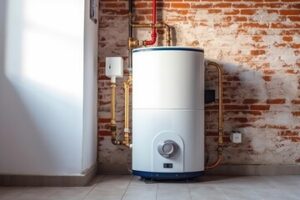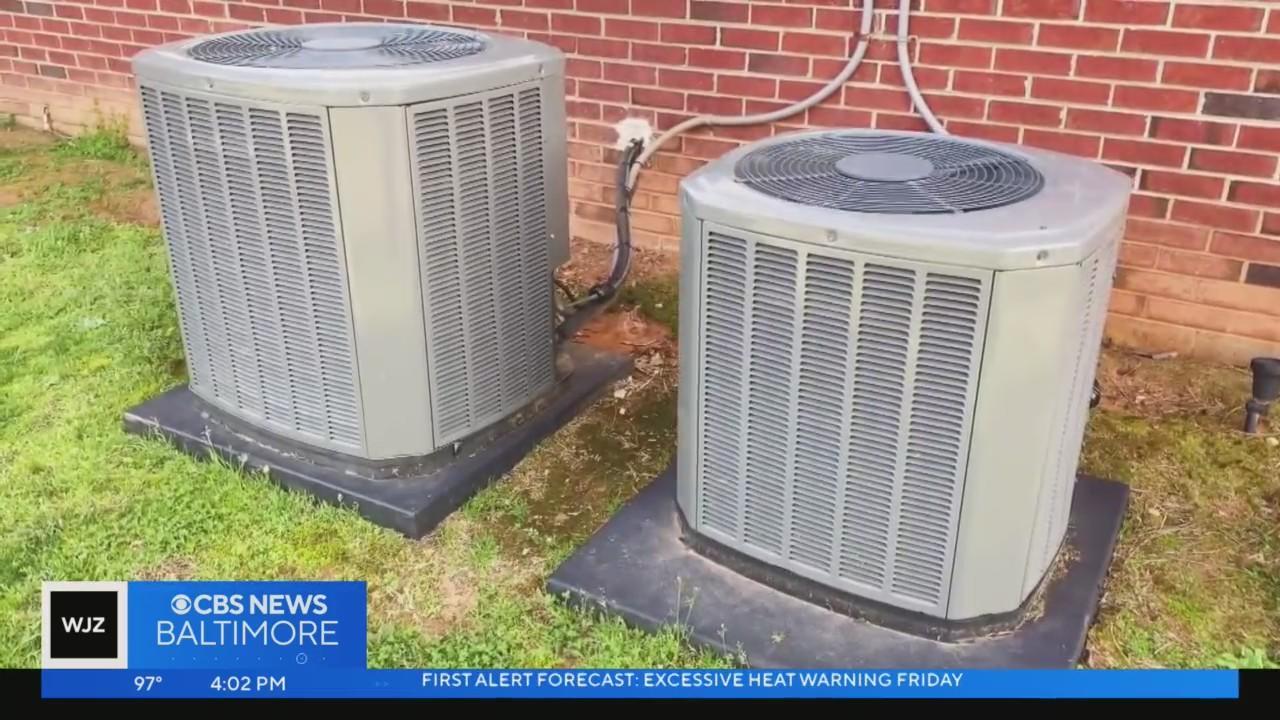Denver Water Heaters provide a host of benefits to households. Whether you’re in need of a new water heater because of failure or simply because you have outgrown your old one, home warranties offer plans and pricing to help with the process.

These traditional units feature an insulated tank that holds hot water. They can be powered by natural gas or electricity and work by constantly monitoring the temperature of the water in the storage tank.
Water heaters account for a significant portion of a home’s energy consumption, so using one that is more efficient can significantly cut utility bills. The latest models use advanced technology that helps minimize environmental impact, offering a wide range of benefits, including lower costs and an extended lifespan. In addition, they help homeowners reduce their carbon footprint and contribute to a greener planet.
Conventional gas water heaters consume large amounts of gas to heat the water in their storage tanks. New technologies that use electric ignition can greatly decrease the amount of gas used to start a fire to heat your water. This not only saves gas but also cuts your energy bill by minimizing standby losses that occur when the water heater is turned off.
Another energy savings option is a gas-fired, tankless model that heats water only when it’s needed. These water heaters can be up to 24%-34% more energy efficient than traditional storage tank units in homes that use 41 gallons or less of hot water daily. In addition, many of these water heaters can be sized to match specific water usage patterns to further increase energy efficiency.
If you have natural gas service in your home, a tankless gas water heater may be the best choice. These models use the same technology as their gas-powered counterparts, but they have additional features that boost efficiency. For example, some gas-fired models have a “vacation mode” that automatically cuts the gas supply to the water heater, reducing energy usage when the house is unoccupied.
Electric and gas-powered models that meet new efficiency standards are a good choice for most homes. If you’re interested in an even greener option, a solar-powered water heater is available that harnesses free energy from the sun to heat your water. These models are a good choice for areas that receive abundant sunshine and can be eligible for state or federal tax credits.
Energy efficiency is reported by the water heater’s energy factor (EF), a measurement that takes into account recovery, cycling, and standby losses. The higher the EF, the more efficient the unit. A new standard, which takes effect in 2029, will further improve energy efficiency ratings for both electric and gas-fired storage and tankless models. These new requirements will require electric resistance models to achieve efficiency gains with heat pump technology, and gas-fired instantaneous, or tankless, models to make improvements through condensing technology.
Condensing Water Heaters
While the conversation about water heaters tends to revolve around efficiency ratings and long-term savings, for many homeowners, immediate affordability is a major consideration. In this regard, non-condensing water heaters offer a powerful combination of performance and value.
Traditional tank-style gas storage water heaters operate by heating a large metal tank of water with a burner located inside the unit. Then, when a hot water demand is made, the water flows through the water heater’s heat exchanger where it picks up thermal energy from the exhaust gases that are then pushed outdoors. This is how a gas storage water heater can typically achieve an energy efficiency rating of 83%.
High-efficiency gas condensing water heaters have an impressive efficiencies of up to 98%. They use the same technology as their traditional counterparts, but a few key improvements allow them to operate at a higher level of efficiency: improved insulation, heat traps, and more efficient burners and heat exchangers help these models consume less energy than conventional storage units.
Because these models are capable of capturing and utilizing the heat from the condensation that would normally dissipate into the environment, they also reduce emissions of harmful greenhouse gases. This is a notable step towards addressing global warming, and it shows that you’re an informed homeowner who seeks to harmonize comfort with conservation.
Aside from their exceptional energy efficiency, these models also feature superior lifespans compared to their non-condensing counterparts. In fact, they are so durable that many can be expected to last for 20 years without ever needing replacement.
Another noteworthy benefit is that condensing water heaters are able to efficiently utilize a wide range of venting options. Unlike standard storage water heaters, which require metal venting because of the high temperatures of their exhaust gases, these models can easily be vented with PVC pipes because the exhaust and flue gases are much cooler.
Of course, as a rule of thumb, you must have a professional calculate the size of your family’s hot water demands in order to ensure your new tankless model is properly sized for optimal functionality and longevity. Once your technician has accounted for things like the number of bathrooms in your home, the frequency of hot water usage, and the requirements of any household appliances that need to be heated, they can recommend an appropriately sized model that will serve you well for decades to come.
Tankless Water Heaters
Tankless water heaters use less energy than storage tank models, so they tend to have lower utility bills. They also don’t have the risk of a ruptured tank, but they do need to be properly maintained and sized. The best model for your home will depend on your hot water needs, household size, and whether you want to use gas or electric units.
Most of the tanks we carry are either natural gas or propane powered, which is better for most households as you’ll likely already have a natural gas line, or at least be able to install one easily. However, we do also offer electrical units for those who prefer the lower cost of an electric model.
For those who may live in an area with limited gas or electric capacity, consider looking into a hybrid unit. These have a smaller, more compact footprint and can use both electric and gas to heat your water. For those who have multiple fixtures that need hot water at the same time, look for a point of use (POU) model that’s designed to focus on your immediate hot water needs. These can be activated with a timer, push button, motion sensor, smart speaker, or even your smartphone to automatically turn on, and only send water to the fixture when needed.
Regardless of the type of tankless water heater you choose, make sure it’s installed by a professional to ensure leak-free water, proper venting, and adequate electrical or gas connections. In addition, a pro can help you sign up for annual maintenance that includes cleaning or replacing water and air filters, checking the burner, and flushing the unit. This is especially important in areas with hard water to keep minerals from clogging the unit’s heat exchanger and reducing efficiency.
A good rule of thumb for selecting a tankless water heater is to determine how many appliances or faucets you’ll need running at the same time, plus the maximum flow rate for each. Once you have this information, our experts can select a model that meets your specific needs.
Installation
Water heaters are a vital household appliance that many take for granted, until they stop working properly. When this happens, it is important to find a reliable installer and get the repair done quickly to avoid expensive damage or replacement costs. The installation process is a relatively simple one and can be completed in just a few hours, but it does require a certain level of skill and specialized tools. The cost of a new water heater varies depending on the model, size, and features that you choose, as well as any additional work needed to properly connect it to your home’s plumbing and gas line.
The first step in installing a water heater is removing the old unit. This can be done using a power tool, pipe wrench, or screwdriver to remove the metal tank from its cradle and place it in a suitable location for disposal. If the tank is in a hard-to-reach area, you may need to hire a professional plumber to complete this task.
After the old water heater is removed, a professional plumber will clean any remaining build-up from the inside of the tank with steel wool and solder in copper adapters at each end of the new pipes. Then, they will solder in the new pipe assemblies to the cold water inlet and hot water outlet on the top of the water heater. It is crucial to solder the joints tightly to prevent leakages.
If you have chosen a gas-powered model, the plumber will need to make the necessary gas connections for the supply lines and the venting system. These are usually made from PVC, and they should be made in a manner that will minimize future maintenance issues. In addition, the plumber may need to install an expansion tank that is designed to handle thermal expansion and prevent excess pressure.
Water heaters come in a range of sizes to fit different needs, and they can be installed in a variety of locations within the home. The accessibility of the location and any extra work required to reroute plumbing or ventilation systems can also impact the final cost of the project. Some models have special energy-saving features or anti-scale mechanisms that can help reduce operational costs. However, these can also increase installation time and complexity, so you should factor in any additional expenses when estimating your overall project costs.

